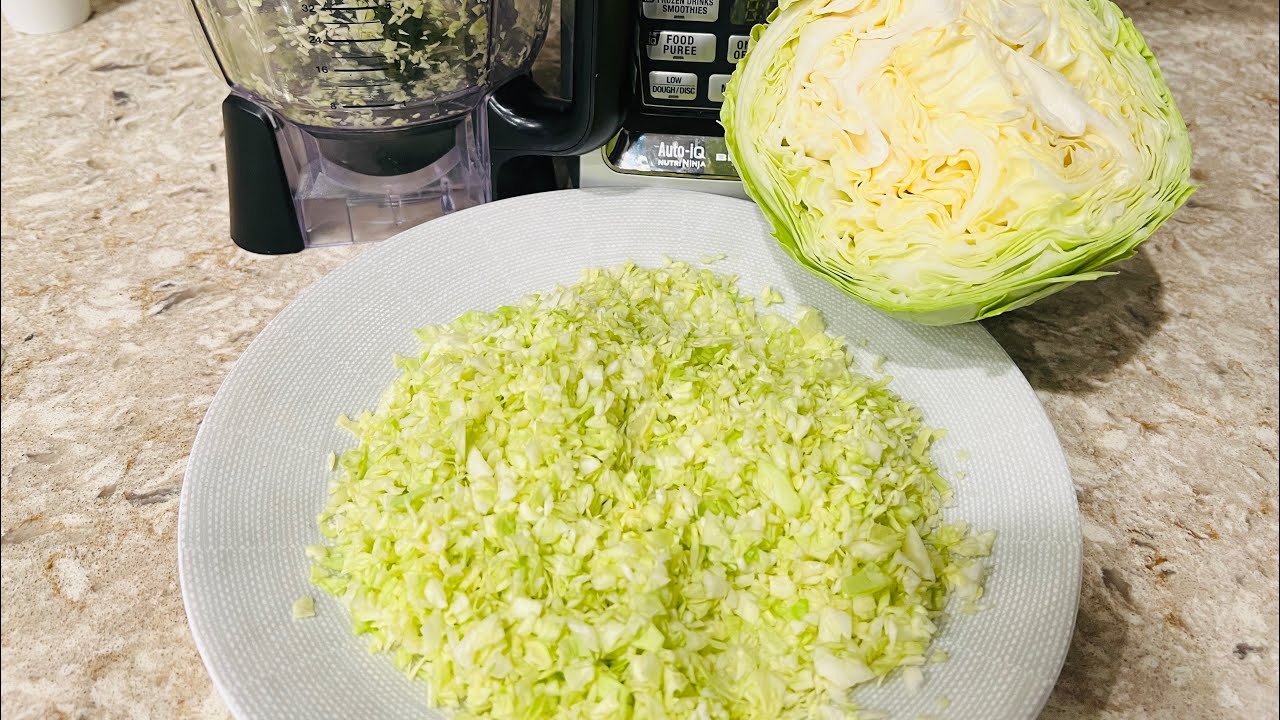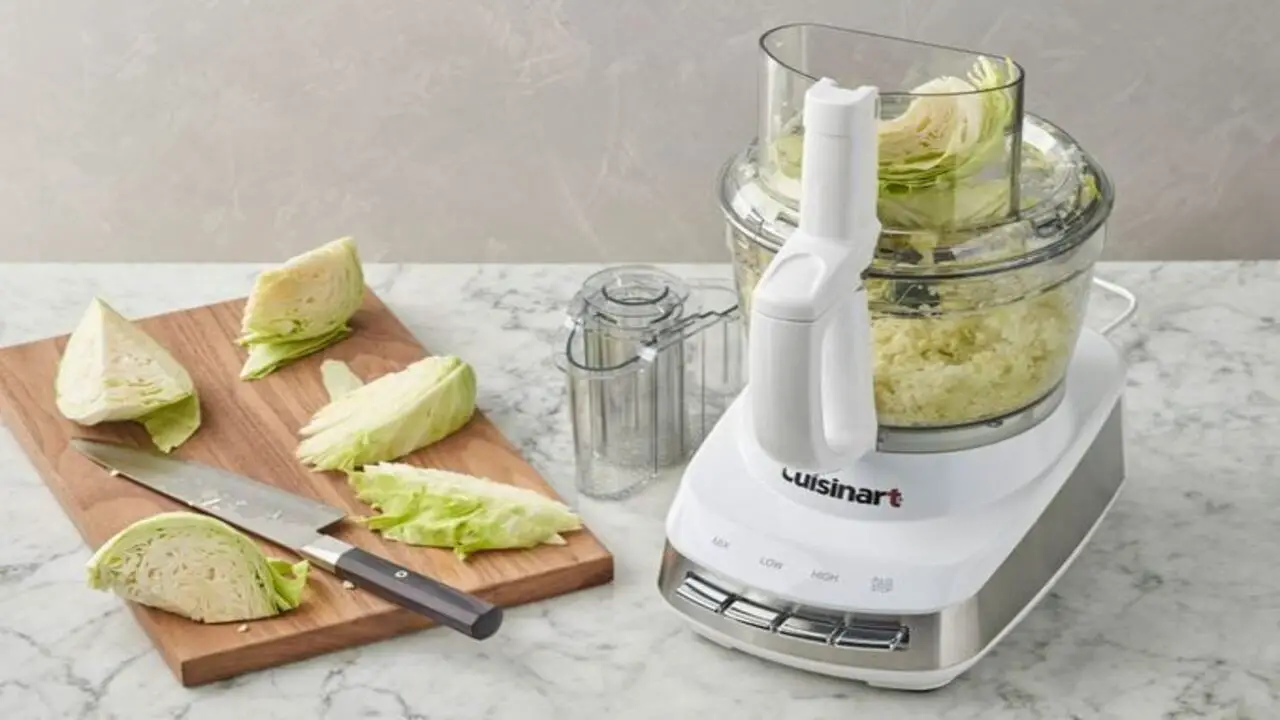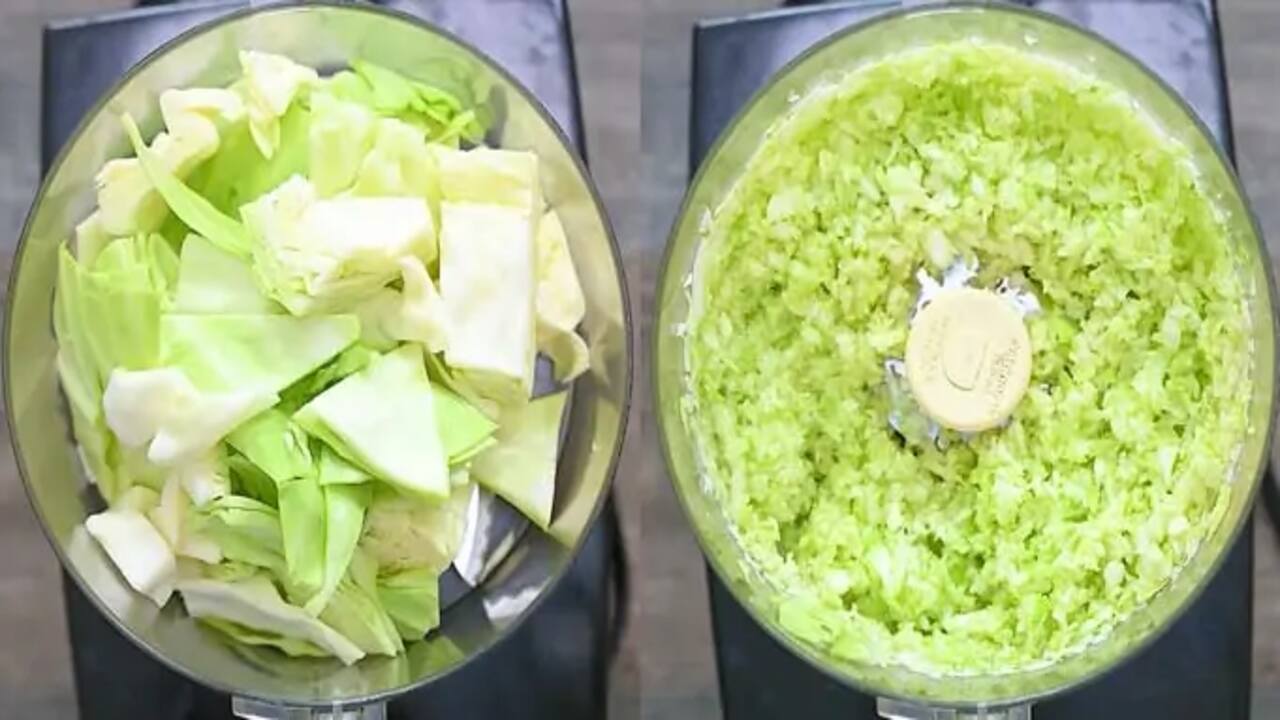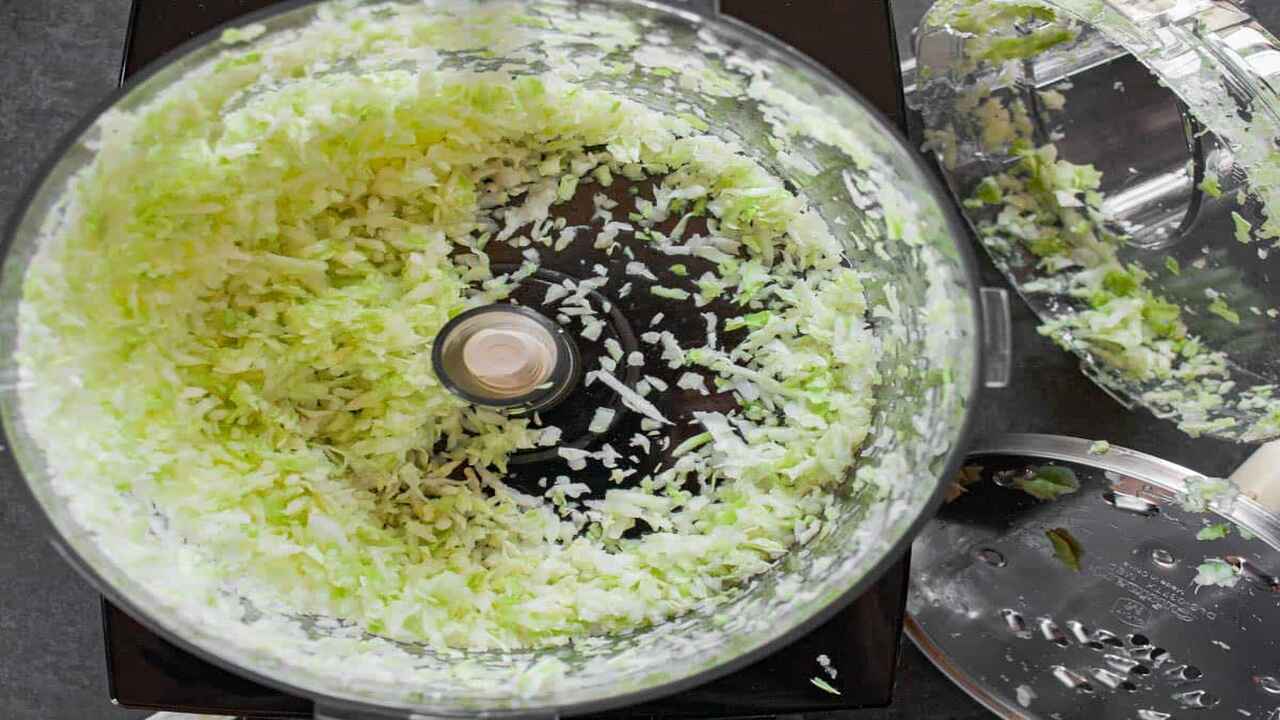Cabbage is a versatile and nutritious vegetable that is widely used in various cuisines around the world. It belongs to the Brassica family and comes in different varieties, such as green cabbage, red cabbage, and Savoy cabbage.
We will show you how to shred cabbage using a food processor, the benefits of this method, and the best practices for storing shredded cabbage. We will also provide tips on choosing the right blade, preparing and cleaning the cabbage, and even share creative recipes you can try with your freshly shredded cabbage.
Don’t let tedious tasks hold you back from enjoying delicious meals. Let’s simplify your cooking process together! We’ll also discuss shredded cabbage food processors.

How To Shred Cabbage Food Processor? Best Methods

Shredding cabbage with a food processor is a quick and efficient way to prepare this versatile vegetable. To get started, remove the cabbage’s outer leaves and cut them into wedges that will fit into the food processor’s feed tube. Next, attach the shredding disc to the food processor and turn it on to the desired speed. Feed the cabbage wedges through the feed tube, using the pusher to guide them into the machine.
The sharp blades of the shredding disc will quickly and effortlessly shred the cabbage into fine, even strands. Once you have shredded the cabbage, remove it from the food processor and use it in your favorite recipes.
Whether you’re making coleslaw or sautéed cabbage, using a food processor to shred your cabbage will save you time and effort in the kitchen. Scroll down to get in details shred cabbage food processor.
Benefits Of Using A Food Processor To Shred Cabbage

Using a food processor to shred cabbage offers several benefits. Firstly, it saves time and effort compared to shredding cabbage by hand. The food processor ensures consistent and even shredding, leading to better cooking results. Additionally, you can shred larger batches of cabbage, which is ideal for meal prep or when hosting big gatherings.
The sharp blades of the food processor easily handle tough cabbage leaves, making quick work of the task. Furthermore, a food processor allows you to customize the shred size of your cabbage to suit different recipes.
Steps To Shred Cabbage Using A Food Processor

Cabbage can be easily shredded using a food processor, making it a quick and convenient option for various recipes. Simply remove the outer leaves of the cabbage and cut it into wedges that will fit into the feed tube of your food processor. Here are the steps to shred cabbage using a food processor:
- Start by removing any outer leaves from the cabbage and cutting it into smaller, manageable pieces.
- Attach the shredding disc to your food processor and ensure it is securely in place.
- Place the cabbage pieces into the feed tube of the food processor, ensuring not to overfill it.
- Turn on the food processor and push the cabbage down gently with the food pusher, allowing the shredding disc to do its job.
- Continue shredding until all of the cabbage has been processed.
- Once finished, carefully remove the shredded cabbage from the food processor and transfer it to a bowl or storage container for later use in your favorite recipes. Shredding cabbage using a food processor can save you time and effort in the kitchen, making it a great technique in your culinary repertoire.
Choosing The Right Blade For Shredding Cabbage
Choosing the right blade is essential when shredding cabbage using a food processor. One option is the thin slicing blade, which creates fine and delicate shreds perfect for salads or coleslaw. Another choice is the shredding disc, which produces thicker and longer shreds ideal for stir-fries or sautés.
If you prefer to customize the thickness of your cabbage shreds, the adjustable slicing disc is the way to go. Lastly, the julienne blade creates thin and uniform cabbage strips, great for pickling or garnishing. Experimenting with different blades will help you find the preferred texture and consistency.
Tips For Preparing And Cleaning The Cabbage Before Shredding

Preparing and cleaning cabbage before shredding is an important step in ensuring delicious and fresh coleslaw or sauerkraut. Start by removing any outer leaves that may be wilted or damaged. Rinse the cabbage under cold water to remove any dirt or debris.
Then, use a sharp knife to cut the cabbage into quarters, removing the core from each quarter. This will make it easier to shred the cabbage using a food processor. Once shredded, rinse the cabbage to remove any remaining dirt or residue. Finally, clean your food processor thoroughly after use to prevent any lingering odours or flavors from transferring to future recipes.
Other Methods For Shredding Cabbage If You Don’t Have A Food Processor
If you don’t have a food processor, you can use several other methods to shred cabbage. One option is to thinly slice the cabbage with a sharp knife and a cutting board. Another method is to use a mandoline slicer, which allows you to achieve thin, uniform slices of cabbage.
Alternatively, you can grate the cabbage into fine shreds with a box grater. If you prefer a different texture, you can use a vegetable peeler to create thin ribbons of cabbage. Finally, you can use a chef’s knife to chop the cabbage into small pieces finely. These methods are great alternatives when you don’t have a food processor.
Best Practices For Storing Shredded Cabbage
When storing shredded cabbage, there are a few best practices to remember. First, storing the shredded cabbage in an airtight container or bag is important to prevent it from drying out and losing its crispness. You can also place a paper towel or cloth inside the container to absorb excess moisture.
It’s recommended to store shredded cabbage in the refrigerator, as this will help maintain its freshness and extend its shelf life. However, use the shredded cabbage within a few days, as it can lose its quality and flavor over time. By following these storage tips, you can ensure that your shredded cabbage stays fresh and ready to use for your favorite recipes.
Creative Recipes And Dishes Using Shredded Cabbage

Incorporating shredded cabbage into your meals opens up a world of creative possibilities. Whether you’re looking for a crunchy addition to your salads or an alternative to noodles in your favorite dishes, shredded cabbage has got you covered.
Add it to stir-fries and slaws for a fresh and satisfying crunch, or use it as a low-carb replacement in recipes like cabbage lasagna or cabbage rolls. Don’t forget to explore other options, such as making cabbage pancakes, fritters, or homemade kimchi. The versatility of shredded cabbage will elevate your culinary creations.
How To Prep Cabbage For Shredding
Preparing cabbage for shredding is a simple process that can be easily done with a food processor. Start by removing any outer leaves that may be damaged or wilted. Then, cut the cabbage into quarters and remove the core from each quarter.
Next, attach the shredding disc to your food processor and feed the cabbage quarters through the chute, pushing down gently with the pusher. The food processor will quickly and efficiently shred the cabbage into thin, even strips.
Once the cabbage has been shredded, it can be used in your favorite recipes, such as coleslaw or stir-fries. Enjoy the convenience and speed of using a food processor to shred cabbage for your culinary creations!
Conclusion
Using a food processor to shred cabbage can simplify your cooking process and save you time in the kitchen. It provides a quick and efficient way to shred cabbage and offers several benefits, such as uniformity in shredding, less manual effort, and versatility in recipes.
Remember to choose the right blade for shredding cabbage and follow the proper steps for preparation and cleaning. If you don’t have a food processor, alternative methods are available. Once you have shredded your cabbage, store it properly to maintain freshness.
Explore creative recipes and dishes incorporating shredded cabbage to add variety to your meals. Simplify your cooking with a food processor and enjoy the convenience it brings to your culinary adventures. We hope you now understand shred cabbage food processor.
Frequently Asked Questions
1.Can You Use A Food Processor To Shred Cabbage?
Ans: Using a food processor to shred cabbage is a convenient and efficient method. Simply attach the shredding blade, cut the cabbage into chunks, and feed it through the food processor. The pulse function helps control the texture.
2.What Is The Easiest Way To Shred Cabbage?
Ans: The easiest way to shred cabbage is by using a food processor with a shredding blade. Alternatively, you can thinly slice the cabbage using a mandoline slicer or a sharp knife. You can also purchase pre-shredded cabbage from the grocery store if you prefer convenience. Just remember to remove the tough outer leaves before shredding.
3.What Is The Best Device To Shred Cabbage?
Ans: The best device to shred cabbage quickly and efficiently is a food processor. It comes with shredding discs that can easily handle large quantities of cabbage in seconds. If you don’t have a food processor, a mandoline slicer or a sharp knife can be alternatives. Adjust the blade size for desired thickness.
4.How Do You Shred Coleslaw In A Food Processor?
Ans: Cut the cabbage into small wedges that fit through the feed tube to shred coleslaw in a food processor. Attach the shredding disc, then feed the cabbage wedges through the tube using the pusher. Empty the shredded cabbage into a bowl and repeat until all cabbage is shredded.
5.Why Use A Food Processor To Shred Cabbage?
Ans: Save time and effort by using a food processor to shred cabbage. It ensures consistent, evenly shredded cabbage for recipes, especially when dealing with larger quantities. Plus, it reduces the risk of injury compared to using a knife.
